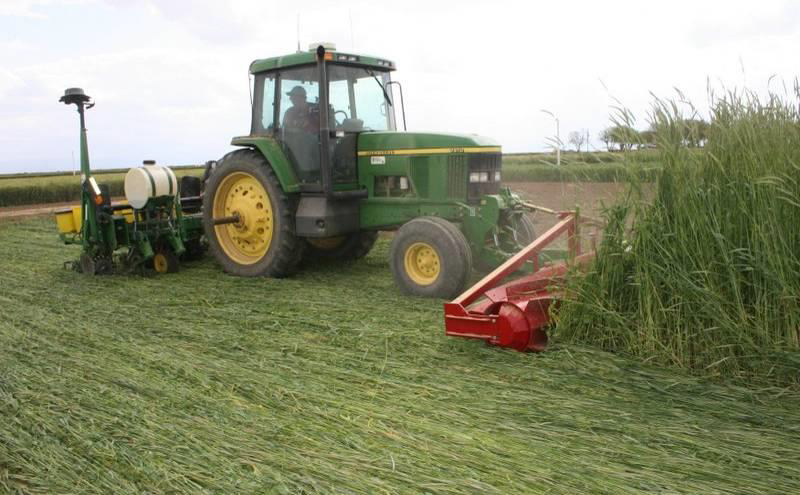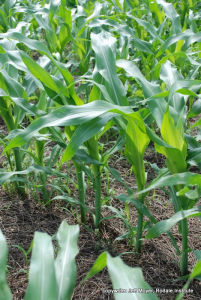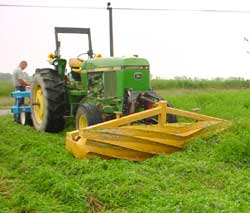Multi species cover cropping always raises quite a bit of interest when I talk about it, and the potential that it has for improving soils and resiliency in a cropping enterprise. It doesn’t matter how great the expected outcomes of a technique, if it isn’t practical to incorporate into current systems then the idea is likely to be discarded. So, I want to share with you some practicalities of cover cropping.
To begin, if you haven’t already done so, I suggest reading blogs The ‘New’ Cover Cropping and ‘Experiences from the U.S. – Cover Cropping’,which are about the many REALLY wonderful benefits of multispecies cover cropping and the experiences of a couple of pioneering Americans.
The two main things that may prevent the adoption and implementation of cover cropping are:
- Ensuring the successful termination of the cover crop
- Planting the cash crop into the bulk material of the cover crop.
This week I spoke with Jeff Moyer, who is the farm director at the Rodale Institute in the U.S. The Rodale Institute is a non-profit organisation committed to research in organic agriculture and to improving the health and well-being of people and the planet. Jeff was a speaker at the Acres USA conference that Derek and I attended in December last year.
What I love about Jeff is he is very practical. His interest in cover crops comes from the need to control weeds in an organic zero till production system, while avoiding the destructive constant tilling of the soil (the traditional way of controlling weeds for an organic farmer).
Jeff asks, how do we take care of weeds in our vegetable patches? We do it with mulch. We can’t however spread masses of mulch over our paddocks as we do our vegetable patches. The answer Jeff says, is that we grow the mulch in the paddock. And we do this as a cover crop – and with great success. (You can see the wonderful mat of mulch in the picture below).
I will remind you of a few important things with regard to cover crops. These being:
- The cover crop is equally as important as your cash crops – so still plant on time, at appropriate rates, with appropriate varieties.
- A thick cover is important to ensure good weed control, so following the above point will help to ensure a good thick cover crop.
- Choose species that deal with your most limiting resource – be this nitrogen, soil carbon etc.
The planting challenge is how do we plant into a thick cover crop, when there is such a bulk of material that is left behind? I will share the detail of planter set up next week, but the first step to making it easy to plant into, is ensuring an appropriate termination of the cover crop.
How to Terminate a Cover Crop?
What Jeff does to terminate his cover crops at the Rodale Institute Farm is to use a no till roller/crimper. The specific roller/crimper that is used was actually developed by the Rodale Institute.
The Roller/Crimper
Jeff advocates that the best way to manage the cover crop is to lay it down with the roller crimper and plant straight into it. By planting right away, the crop material is still green and readily cut through with planting gear. Conversely, waiting a long time would mean that the material becomes so brittle that it is more easily planted through, but such a long wait is not desirable. Hence the development of the roller crimper.
You can see that the roller crimper has a set of blades that run around a central cylinder. When the implement is run over the crop at ground level, the blades crimp the stems of the cover crop, preventing sap flow and killing the plant (when done at the appropriate stage of the plant’s life).
Jeff described it to me like a drinking straw. If you took a straw and bent it back and forward in about 7 places, it wouldn’t be very easy to drink through. This is exactly what the crimper does. You can check it out in action here. (scroll down to the clip).
The advantage of planting into this laid down crop is that the stems are still attached to the soil via the plant roots. This makes it possible to plant through the thick mat of cover crop material (if planting in the direction that the crop has been laid down).
Cover crop must be a maturity
Another key consideration for the successful termination of a cover crop is that the rolling occurs at the appropriate stage of the plants that make up the cover crop. Plants should have flowered and be sexually mature to ensure that the plants are killed after rolling.
The roller must have contact with the ground
Lastly, Jeff points out that to have a successful cover crop termination, it is best that the roller/crimper is the very first piece of equipment to touch the crop. This is why, even if you are crimping and planting in two passes, it is still best that the crimper be out the front of the tractor.
The crimper relies on the soil for the roller to push against. If a tractor has just passed through and sunken into the soil slightly, this area of the cover crop may not be crimped adequately and there may be tyre tracks of inadequate crop kill.
This made me wonder how this could be managed in a controlled traffic environment. Jeff explains ‘that nature is dynamic and flexible and has the ability to change its direction in order to repopulate the landscape with the plants of its choosing. That means we need to “hit the reset button” now and then in order to keep the plants we want in the system. If a farmer intends to use continuous no-till then he/she will need to use a herbicide to control that shift. If the farmer is an organic farmer then tillage at some point in a long term rotation will be necessary to maintain system integrity. In either event the roller/crimper can be used and the tram tracks will be dealt with within the crop rotation and the cropping/tillage or herbicide cycle’.
Similarly, any large rocks in the paddock will lift the roller up and off the ground, preventing correct crimping of plants against the soil and creating a similar issue to what tram tracks may cause.
Build your own roller/crimper
Fortunately, the roller/crimper is a relatively inexpensive thing to construct relative to the purchasing of other farm implements. The Rodale Institute have all the detailed plans available on their website for you to do so. You can see them here. You may be able to get together with a neighbour or friend in your area and share the work and cost of building your own roller/crimper, and share your experiences of using it.
I will talk next blog about the particulars of planting equipment that are necessary for the successful establishment of a grain crop into the rolled cover crop.




Kirrily, this year we’ve opted for an early chemical kill. Not ideal I know, but starting moisture for cash crop is important. We are hoping for some recharge before we plant our winter crops. The early planted millet has done really well. Mowing a portion of it has increased the root mass hugely. Maybe 5X. This will be done to all millet in future. Our seven way species mix has done well but not competed with hairy panic and heliotrope. The cost of seed had resulted a thinner than desired seeding rate. We will harvest some millet, sunnies, sudax, safflower and cowpeas. Hopefully we can go with a higher seed rate next year.
It would be nice to call it something other than cover cropping. The name seems to freak people out. A bit like all things ‘Eco’
Cheers